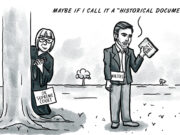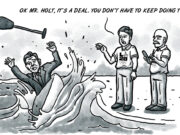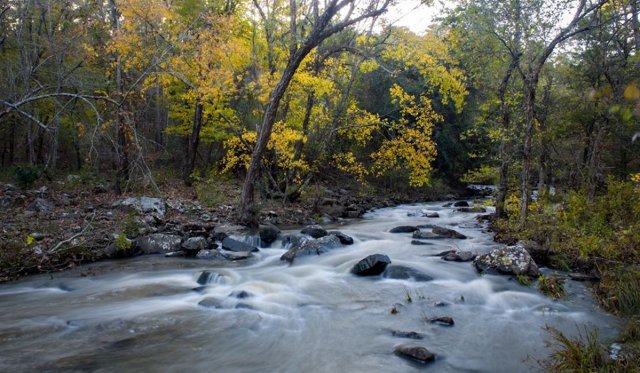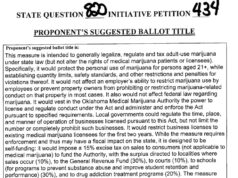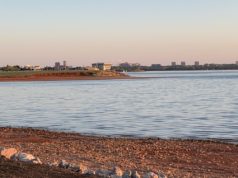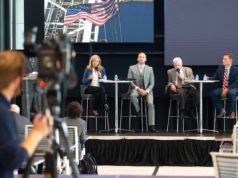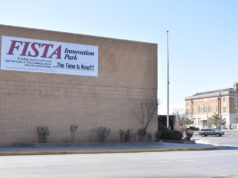
There is a special magic in the story of Oklahoma. The story of Oklahoma is the story of America: triumph and tragedy fused into one place. But it all happened in the span of a few decades here. Oklahoma has become mythologized as one of the last places in America to be tamed; one of the last places that could truly be called the Wild West.
Born in a hurry to anybody willing to come and stake a claim, Oklahoma has a special magic that in part owes its allure to the contradiction inherent in this mythologization. Oklahoma was tamed at a time when the rest of the world had begun to realize the horrible crimes our achievements rest on and was trying either to acknowledge them or cover them up. When the East was settled, the crimes were committed in the name of a righteous and holy order. When Oklahoma was born out of broken promises to native nations — and with the twinkle of white supremacy in the eye of some inhabitants — America already had the Bill of Rights, the 14th Amendment and the internal combustion engine.
But Oklahoma is much more than a single place or a single story, and the entertainment industry has finally lifted its head to realize this. There are countless stories, worlds and histories in Oklahoma that are little-known within the state, let alone without. Oklahoma’s stories teach us about oppression, prejudice, perseverance, community, corruption, cruelty, hope, and countless other things that are the story of America. We’ve been bombarded recently with social media posts about celebrities in the state scouting locations to film. In all this excitement, it is important not to give too much power to others in telling our own stories.
Our governor and lieutenant governor are undertaking a mission to rebrand Oklahoma with another new license plate and slogan. They want Oklahoma to define itself for the other 49 states. It seems the confluence of these two events — our rebranding and the renewed interest in Oklahoma stories — could not be more poorly timed. They stand as yet another reminder that marketing and the truth often don’t cooperate. But Oklahoma history can contain these contradictions.
Oklahoma can be the adventurous home of the longest stretch of Route 66 while forensic archaeologists scan for mass graves from our nation’s bloodiest race massacre. We can be the proud home of Fort Sill, Tinker Air Force Base and other military bases while still being the place that saw the worst terrorist attack on U.S. soil pre-9/11 at the hands of an anti-government extremist. We can still be the home of Woody Guthrie when white nationalist groups are posting flyers on streets that paved over historic black neighborhoods. We can still be the home of picturesque small towns as rural areas of our state are bled dry. We can be known for our friendly and kind residents, but we also have some of the highest rates of domestic abuse.
These contradictions can coexist as long as the full picture is presented to the public.
It seems that the rest of the country has finally realized what many of us have known all along: that Rodgers and Hammerstein were full of shit, or rather that the Oklahoma presented in the musical has nothing to do with the actual Oklahoma. Or, more precisely, Rodgers and Hammerstein weren’t so much interested in faithfully telling the story of Oklahoma as they were in crafting entertainment. Who can blame them? They never promised to be our storytellers, and they never set foot here until after their songs were written. But our leaders should be interested in telling the truth and the whole truth. Unfortunately, they are sometimes more interested in the same thing our friends on Broadway were: marketing and profits.
I won’t deny that bringing business to Oklahoma is a good thing and that some marketing spin is necessary, but Oklahoma’s state government has a higher duty than maximizing profits. When we let the powerful do the marketing, only their stories get told. To gloss over the full picture of Oklahoma would be to intentionally misinform and misrepresent.
The real stories in Oklahoma are just as much about blood in the streets as they are about golden hazes on the meadow. We’ve seen the 1921 Tulsa race massacre on HBO, and soon we’ll be seeing Osage murders, Bass Reeves, and Oklahoma’s historic Black towns depicted on the small or big screen.
What our concern should be is who gets to tell the multitude of stories that Oklahoma contains and what those stories say. Do we trust the entertainment industry to do our stories justice? Did Rodgers and Hammerstein get it right the first time? Have we forgotten how the movie industry depicted Native Americans for decades? Will the people of Boley, past or present, get to tell their town’s history?
We have seen one of our own do a less-than-satisfying job of telling Oklahoma’s story in Ron Howard’s Far and Away, which gave us a rosy and simplified telling of the Land Run of 1893, although not completely inaccurate. We can only hope that the numerous Okies who have left their birthplace and set out for Hollywood will want to come back and tell authentic stories of the place they left.
No one should be against Oklahoma’s stories being told or filmmakers coming here, but we should hold the storytellers accountable. So far, all evidence suggests that upcoming productions will do justice for the histories of Boley, Bass Reeves and Black Wall Street. I’m not calling for our new license plate to depict bloody incidents, or for our slogan to be a negative one. But it is up to the people who know those stories best to make sure those stories are told right and completely.






